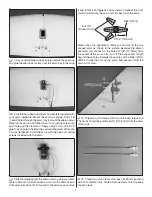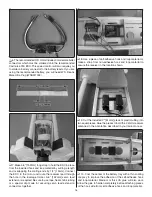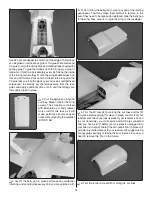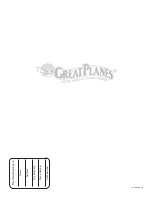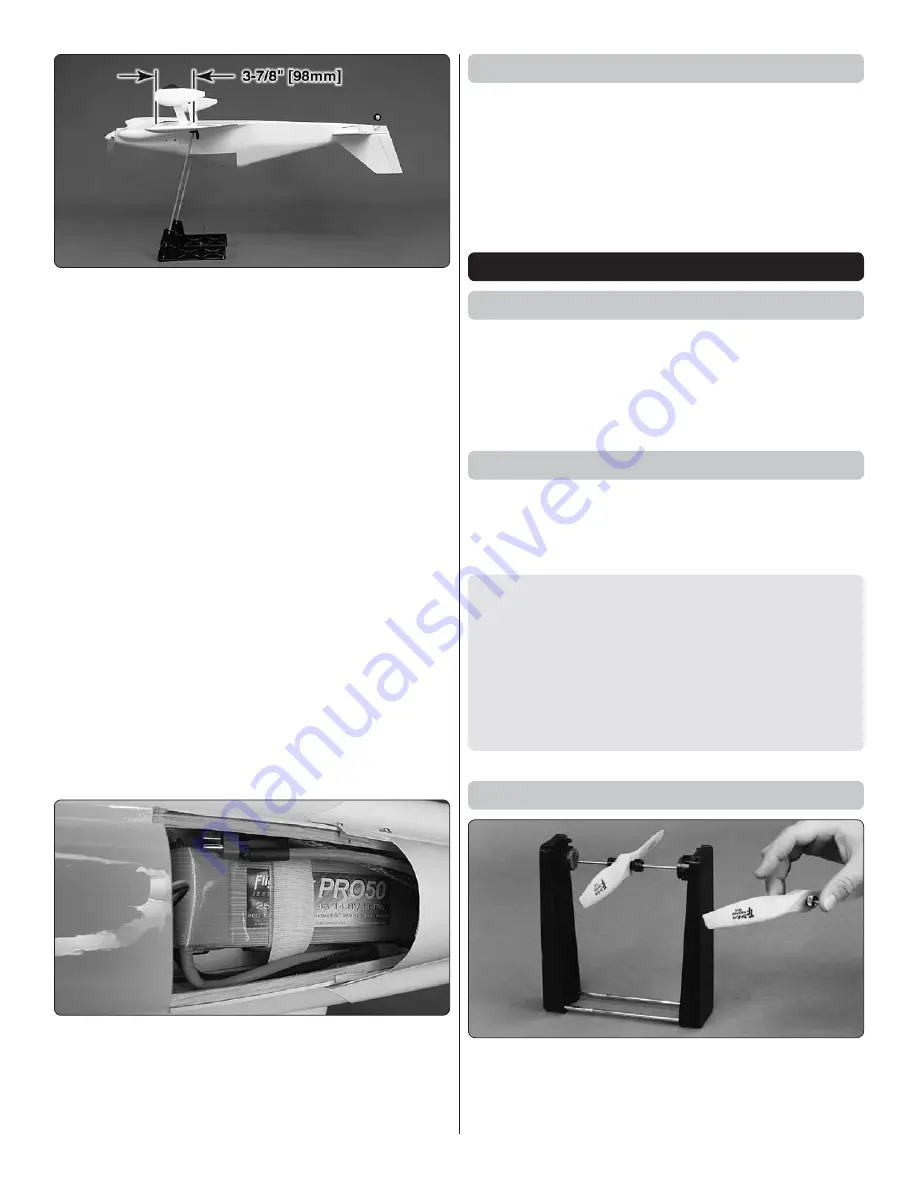
23
❏
2. With the wing attached to the fuselage, all parts of the
model installed (ready to fl y) and an empty fuel tank, place
the model upside-down on a Great Planes CG Machine, or
lift it upside-down at the balance point you marked.
❏
3. If the tail drops, the model is “tail heavy.” Move the battery
pack forward to get the model to balance. If the nose drops,
the model is “nose heavy.” Move the battery pack aft. If the
battery cannot be moved far enough to bring the model to
balance, or if additional weight is still required, nose weight
may be easily added by using Great Planes “stick-on” lead
(GPMQ4485). To fi nd out how much weight is required, place
incrementally increasing amounts of weight on the bottom
of the fuselage over the location where it would be mounted
inside until the model balances. A good place to add stick-
on nose weight is to the fi rewall. Do not attach weight to the
cowl—this will cause the mounting screws to open up the
holes in the cowl. Once you have determined the amount of
weight required, it can be permanently attached. If required,
tail weight may be added by cutting open the bottom of the
fuse and gluing it permanently inside.
Note:
Over time, the adhesive on the stick-on lead weight
may fail and cause the weight to fall off. Do not rely on the
adhesive alone to secure the weight. Instead, permanently
attach the weight with glue or screws.
❏
4.
IMPORTANT:
If you found it necessary to add any weight,
recheck the C.G. after the weight has been installed.
❏
5. Once you have determined the optimum position of the
battery on the battery tray, make a strap from the remaining
hook and loop material and fi t it through the slots in the battery
tray that best match the location of the battery. Mark the
location of the battery. Use the marks to position the battery
on the tray for future fl ights.
Balance the Model Laterally
❏
1. With the wing level, have an assistant help you lift the
model by the engine propeller shaft and the bottom of the
fuse under the TE of the fi n. Do this several times.
❏
2. If one wing always drops when you lift the model, it means
that side is heavy. Balance the airplane by adding weight to the
other wing tip.
An airplane that has been laterally balanced
will track better in loops and other maneuvers.
PREFLIGHT
Identify Your Model
No matter if you fl y at an AMA sanctioned R/C club site or if
you fl y somewhere on your own, you should always have your
name, address, telephone number and AMA number on or
inside your model. It is
required
at all AMA R/C club fl ying sites
and AMA sanctioned fl ying events. Fill out the identifi cation
tag on the back cover and place it on or inside your model.
Charge the Batteries
Follow the battery charging instructions that came with your
radio control system to charge the batteries. You should always
charge your transmitter battery the night before you go fl ying,
and at other times as recommended by the radio manufacturer.
CAUTION:
Unless the instructions that came with your
radio system state differently, the
initial
charge on
new
transmitter and receiver batteries should be done for 15
hours
using the slow-charger that came with the radio
system
. This will “condition” the batteries so that the next
charge may be done using the fast-charger of your choice.
If the initial charge is done with a fast-charger the batteries
may not reach their full capacity and you may be fl ying with
batteries that are only partially charged.
Balance Propellers
Carefully balance your propeller and spare propellers before
you fl y. An unbalanced prop can be the single most signifi cant
cause of vibration that can damage your model. Not only
will engine mounting screws and bolts loosen, possibly with

